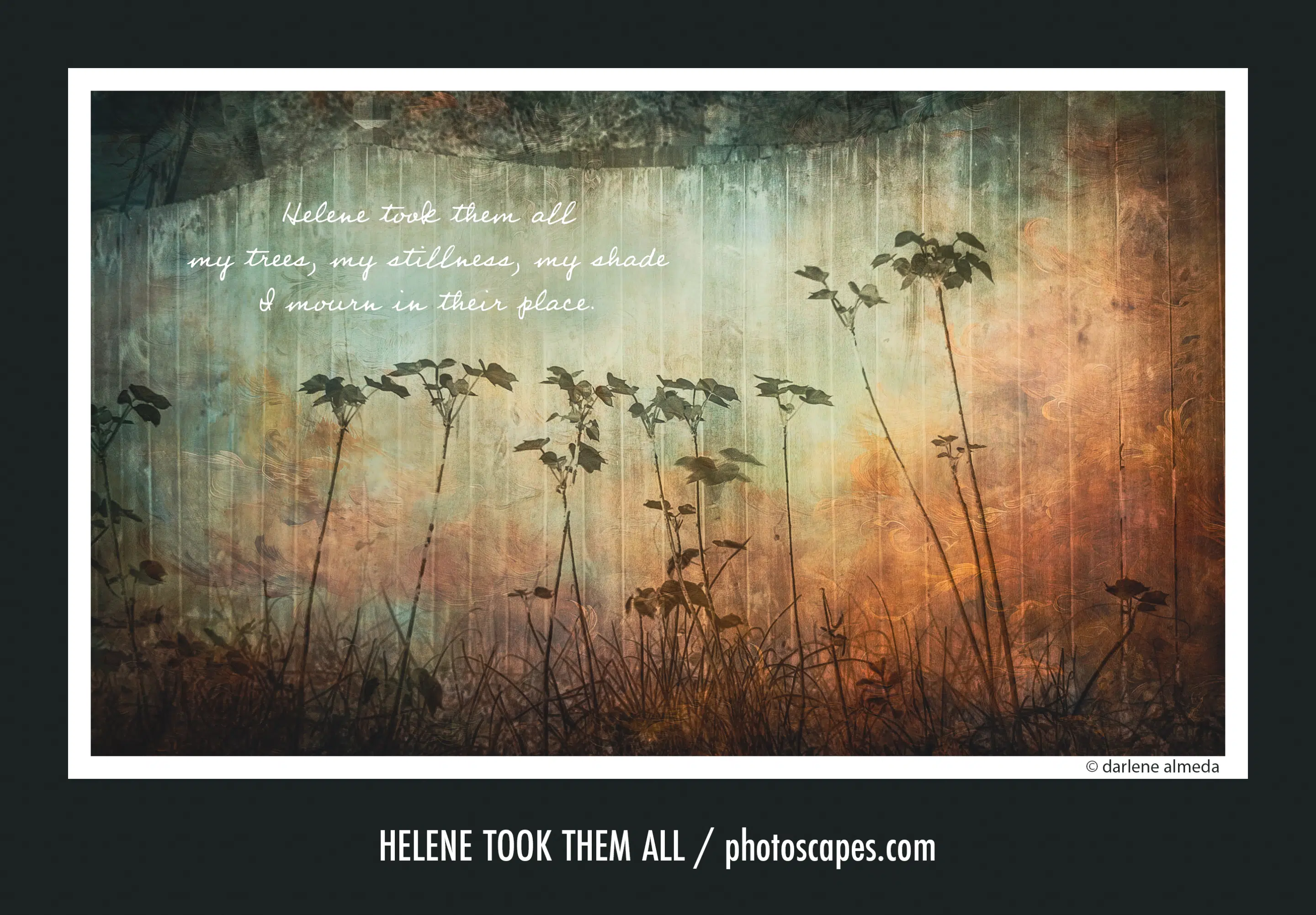When Hurricane Helene decided to drop by uninvited on September 26, 2024, she didn’t just overstay her welcome—she rearranged the place entirely. While our house, thankfully, was spared, we lost eleven trees. Eleven. It was as if she looked at our quiet backyard paradise and said, “Hmm, let’s give this space some breathing room.”
I bought this property back in 2007, mostly because of those trees. They were tall, strong, quiet, and beautiful—pretty much the dream companions for someone freshly divorced. I’ve always leaned into the “nature girl” label (though I suppose I’m now a full-grown nature woman). I’ve lived in cities, sure—I can admire them the way I admire abstract art or very energetic toddlers: from a respectful distance.
I’ve done my time in the city. Early in my career, I lived and worked in Brooklyn and Manhattan, dodging cabs and deadlines. I spent part of my youth in Topanga Canyon, just a hop and a skip from Los Angeles, and another part about twenty miles outside Philadelphia. So yes, I understand both the urban buzz and the rural hush—but let’s be honest: I’ll take birdsong over car horns any day.
Losing those trees hit harder than I expected. I told myself I’d replant wildflowers and make it beautiful again—but not yet. I needed to sit with the silence first. I needed to mourn. And somewhere in that stillness, a project began to form. This photo series is how I’m processing the loss—turning something deeply sad into something expressive.
You might not understand my grief over trees, and that’s okay. But if you return and watch this project grow—how my emotions take shape through photographs and handwritten haiku—then maybe you’ll begin to understand how something broken can become the beginning of something beautiful.
The Process
This project is going to be messy. I’m not usually one for messy—I like things with purpose and order. But this? This one hurts. And grief doesn’t follow neat lines or tidy folders.
Every time I step into my backyard, I’m faced with the harshest reminder of what’s gone. It looks like a graveyard—massive stumps, shattered trunks, the aftermath of a quiet war that Helene dropped from the sky. The difference between September 25th and 26th is staggering. One day it was lush and full of life. The next? A barren wasteland. So yes, this work is messy. My emotions are messy. But in that mess, truth lives.
Messy also means letting go of routine. I don’t care what camera I use. Digital, film, fancy, battered—if it’s the day I need to speak through an image, that’s the tool I’ll reach for. The first photo in the series, Helene Took It All, was made with a Cambo 6×12 film back on an Ebony 4×5 and Kentmere 100 film. Why? Simple: the film back arrived the day before and needed testing. I told myself, “Go out back. Start looking. It’s time.”
After developing the film, I didn’t scan it the usual way. I just photographed the negatives with my iPhone. That’s where I was—tired, grieving, not in the mood for perfection. In Lightroom, I saw something. Then, in Photoshop, I added colored textures—browns, greens, a sense of the life that had been stolen. It helped. It felt like I was speaking the language of loss in a way someone else might hear.
The haiku came quickly. I’m mad at Helene. That much is obvious. But I’m also trying to find meaning in the rubble. This series is my way of turning heartache into something I can hold in my hands—something that says: this mattered.
Author’s Note: Photography isn’t just about making stunning images. It’s also about telling the truth—especially when life turns upside down. Use your camera to speak the unspeakable, to hold grief, to name joy, to make visible what would otherwise stay buried. Art doesn’t always fix what’s broken—but it gives you a place to begin.
my trees, my stillness, my shade
i mourn in their place

